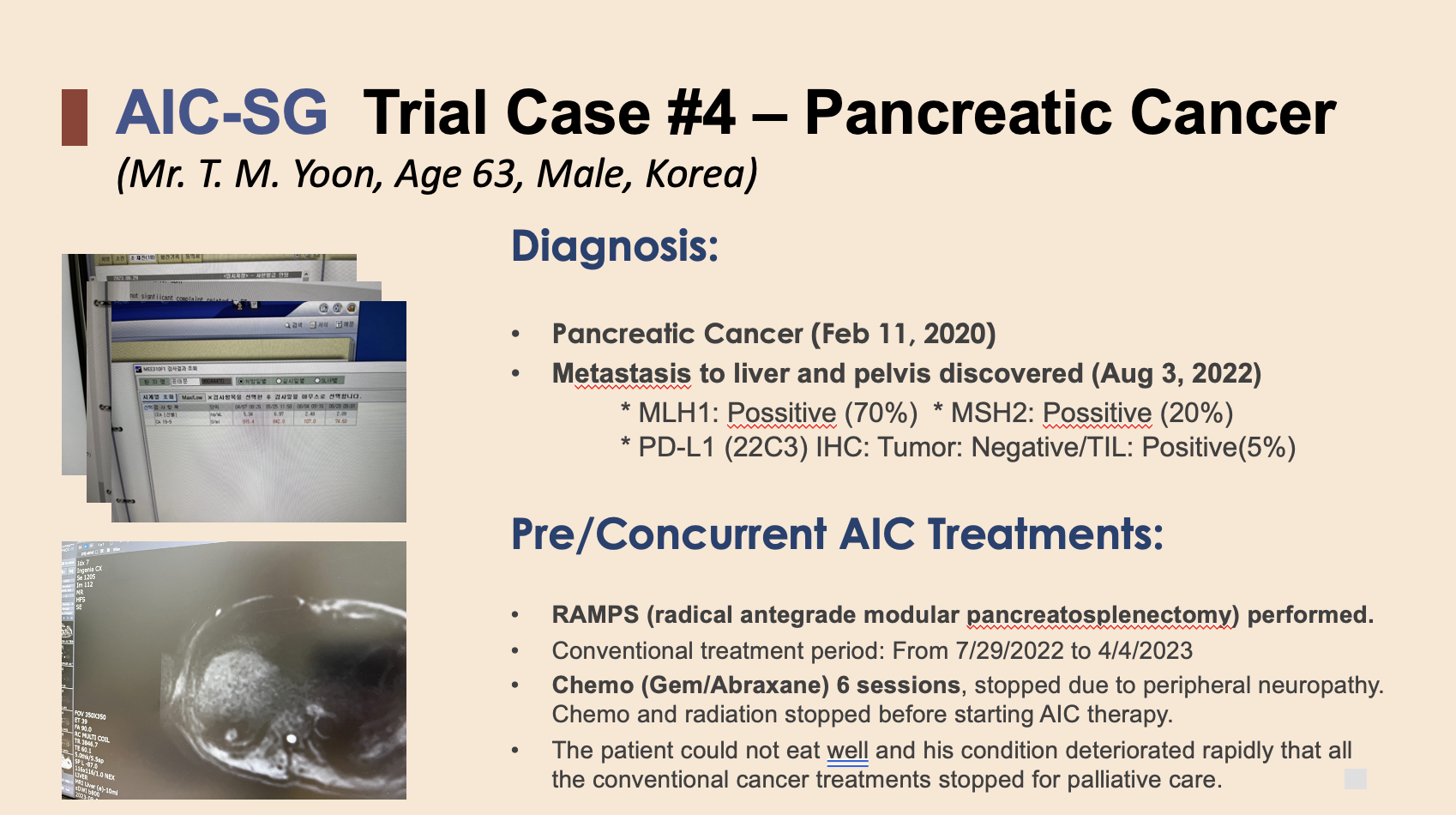
Ionic Calcium in oncology
Calcium dysfunction leads to cellular mutation
•A large accumulation of calcium ions inside mitochondrial membranes induces the production of Reactive Oxygen Species (ROS), which causes damage to DNA, RNA, and proteins, resulting in cell mutation, the main driving force of aging and cancer.
•Mitochondrial damage forces cells to undergo fermentation which upregulates genes to support fermentation, which is cancer cells’ preferred form of metabolism.
•DNA repair ability is reduced in a variety of pathologic conditions. In addition, in some of these diseases, a disturbance in cellular Ca2+ homeostasis occurs, or cytosolic Ca2+ responses to various stimuli are impaired.
•These results emphasize the importance of precise cellular Ca2+ level regulation for the optimal DNA repair process.
•Disturbed Ca2+ metabolism and defective response to Ca2+ stimulators have been reported to exist in some patients with DNA repair deficiency… Thus impaired DNA repairability may result in part from a disturbed Ca2+ homeostasis.
Calcium Dysfunction leads to mitochondrial dysfunction
“During the past two decades calcium (Ca2+) accumulation in energized mitochondria has emerged as a biological process of utmost physiological relevance. Mitochondrial Ca2+ uptake was shown to control intracellular Ca2+ signalling, cell metabolism, cell survival and other cell-type specific functions by buffering cytosolic Ca2+ levels and regulating mitochondrial effectors. Recently, the identity of mitochondrial Ca2+ transporters has been revealed, opening new perspectives for investigation and molecular intervention. ”
Ionic Calcium Fights Cancer on Multiple Fronts
•“The development of malignant tumors results from deregulated proliferation or an inability of cells to undergo apoptotic cell death.
•Experimental works of the past decade have highlighted the importance of calcium (Ca2+) in the regulation of apoptosis.
•Several studies indicate that the Ca2+ content of the endoplasmic reticulum (ER) determines the cell’s sensitivity to apoptotic stress and perturbation of ER Ca2+ homeostasis appears to be a key component in the development of several pathological situations. Sensitivity to apoptosis depends on the ability of cells to transfer Ca2+ from the ER to the mitochondria.”
AIC Dosing for ALL Stage Cancers
Because AIC Therapy is non-toxic and building healing momentum is important, ACRI recommends minimum 4 doses of AIC therapy daily for a minimum of 3 months to see the benefits of AIC therapy to be convinced to continue.
Please take AIC on an empty stomach at least 30 minutes before a meal. Take one dose after waking up, one at 30 minutes before lunch, one at 30 minutes before dinner, and one at 2 hours before bed. (Ionic calcium could trigger an urge to urinate.
Blood tests are recommended for every 2-4 weeks to monitor progress.
DXA/ultrasound bone scans are also recommended at the beginning of each phase to measure bone health progress. Reaching the minimum T score of -1.0 (normal) is recommended before moving into Phase 3 if the patient started with low bone density.
AIC Ionic Calcium Therapy for Oncology Slides
AIC + AICSG COMBINATION THERAPY
PET Scan Machine used for detecting cancer utilizes radioactive isotope of fluorine bonded to glucose.
AIC-SG Calcium Gluconate Molecule utilizes Antiorbital Bonding to Calcium which makes it invisible to our body
PET Scan uses radioactive Glucose molecule to detect cancer
Strategy Behind AIC-SG Therapy
Cancer cells have significant heterogeneity in glucose metabolism. Most cancer cells rely largely on aerobic glycolysis as it accounts for 56–63% of their ATP budget. So, cancer cells plunder more glucose from the microenvironment, up to 200x more than normal cells, and secrete more lactic acid to meet the requirements of energy and material metabolism. This characteristic is utilized in PET scans to detect cancer by attaching a radioactive isotope of fluorine to glucose. Borrowing from the principle behind PET scans, by attaching a cancer-targeting material to a glucose molecule, we can now aggregate a lethal dose of cancer-targeting material in ‘glucose-hungry’ cancer cells to induce its destruction.
AIC-SG utilizes Antiorbital Formulation Technology to incorporate antiorbital calcium into calcium gluconate. This AIC calcium is concealed and indiscernible to our bodies, and AIC-SG is perceived as glucose rather than calcium, earning it the name "Stealth Glucose." Therefore, AIC-SG is directly absorbed through GLUT transport as glucose and not digested as calcium. Since cancer cells are hungrier for glucose and AIC-SG is absorbed and metabolized by cancer cells, AIC-SG releases free radicals, which destroy tumor cells with strong oxidative power.
AIC-SG is safe to use because when it is metabolized in oxygen-rich health cells, no free radicals are released. AIC-SG releases cancer-killing free radicals when metabolized only in oxygen-deficient cancer cells, making it a safer remedy compared to using other toxic materials causing collateral damage.
TREAD with CAUTION
Cancer is a systemic disease that finds its cause and enablement in many aspects of a patient’s life. Therefore, we believe in treatments that target not only the cancer but the patient as a whole. Often even good therapies that are non-toxic could also lay a burden on the patient’s organs in the healing process, and it is important that the patient’s ability to handle the treatment must be constantly monitored to reap successful outcomes. In utilizing AIC + AICSG combination therapy as a part of a more comprehensive treatment, we recommend only qualified physicians incorporate the therapy with careful monitoring for TLS (Tumor Lysis Syndrome) and electrolyte disturbances that could result from rapid tumor necrosis, especially with concurrent conventional treatments such as radiation therapy and chemotherapy.

Treatment of Tumor Lysis Syndrome
The treatment of TLS involves aggressive management of the underlying cause, such as cancer or chemotherapy. Supportive care is also necessary to prevent complications, such as kidney failure and electrolyte imbalances. Treatment options may include:
Hydration: Patients are given large amounts of fluids intravenously to help flush the kidneys and eliminate toxins from the body.
Medications: Certain medications, such as allopurinol and rasburicase, may be used to prevent or treat high levels of uric acid in the blood, which is a common complication of TLS.
Dialysis: In severe cases, dialysis may be necessary to remove excess toxins from the blood.
Tumor Lysis Syndrome in AICSG Therapy
Tumor Lysis Syndrome: Causes, Symptoms, and Treatment
Tumor Lysis Syndrome (TLS) is a medical emergency that can occur when cancer cells release large amounts of substances into the bloodstream. These substances can overwhelm the body's natural ability to remove them, leading to severe complications and even death if left untreated.
TLS most commonly occurs in patients with blood cancers, such as leukemia and lymphoma. It can also occur in solid tumors rapidly growing or dying, such as certain types of lung, breast, and gastrointestinal cancers. Chemotherapy and radiation therapy can also contribute to the development of TLS, as they can cause cancer cells to break down and release their contents into the bloodstream. The symptoms of TLS can vary depending on the severity of the condition. Common symptoms include abnormal heartbeat, shortness of breath, muscle weakness, fatigue, nausea and vomiting, decreased urine output, seizures, etc.
Because of the AICSG mechanism of action that could cause rapid regression of cancer tumors, TLS should always be monitored for patients with high risk, especially when undergoing chemotherapy and radiation therapy concurrently. When TLS is suspected, either stopping or dialing the dose of AICSG and slowly bringing it back up when patients are doing better is recommended.
Most patients with tumor lysis syndrome have laboratory derangements in lactate dehydrogenase, potassium, phosphate, calcium, and uric acid, as well as abnormal renal functions, occurring 1-3 days after chemotherapy initiation. Hyperkalemia is often the first life-threatening abnormality.
Prevention of Tumor Lysis Syndrome
Preventing TLS is essential, and taking measures to identify patients at high risk of developing the condition is important. Preventative measures may include:
Monitoring: Patients are closely monitored for signs of TLS during treatment, and blood tests are conducted to measure electrolyte levels and kidney function.
Hydration: Patients may be given fluids before and during treatment to help prevent the onset of TLS.
Medications: Certain medications, such as allopurinol, may be given to prevent the buildup of uric acid in the blood.
When TLS is suspected, stopping or dialing the dose of AICSG and slowly bringing it back up when patients are doing better is recommended.
AIC + AICSG Dosing for All stages of Cancer
Because AIC & AICSG therapy is non-toxic and building healing momentum is important, ACRI recommends a minimum of 3 doses of the AIC+AICSG combination therapy daily for a minimum of 3 months to see the benefits of the therapy to be convinced to continue.
Please take the mix on an empty stomach at least 30 minutes before a meal. Take one dose after waking up, one 30 minutes before lunch, one 30 minutes before dinner, or one 2 hours before bed are recommended time slots. (Ionic calcium could trigger an urge to urinate)
Blood tests are recommended for every 2-4 weeks to monitor progress.
DXA/ultrasound bone scans are also recommended at the beginning of each phase to measure bone health progress. Reaching the minimum T score of -1.0 (normal) is recommended before moving into Phase 3 if the patient started with low bone density.







































































































































































